27 August 2021, “In his submission, Mr McCarthy said while he supports the museum and cafe elements, he has serious ecological concerns about the construction of a car park next to the Atlantic Pond. He said the car parking issue linked to stadium events has never been fully resolved, and a proper transport plan to and from the stadium is needed”, Cork councillors have ‘serious concerns’ about Páirc car park revamp,
Cork councillors have ‘serious concerns’ about Páirc car park revamp (irishexaminer.com)
Category Archives: Uncategorized
Kieran’s Our City, Our Town, 26 August 2021

Kieran’s Our City, Our Town Article,
Cork Independent, 26 August 2021
Journeys to a Truce: Annie McSwiney Returns Home
This week, one hundred years ago, coincided with the return from the United States of Harry Boland and Annie (Eithne) McSwiney, sister of Terence McSwiney. Mr Harry Boland, secretary to Éamon de Valera, who was in Washington DC for two years as “representative of the Irish Republic” landed at Southampton on Saturday 20 August 1921 from the White Star liner Olympic. Addressing the journalists present on his return he noted of the Irish Independence question; “The Americans were all anxious for the Irish Independence question to be settled soon”, but the majority were of the opinion it was a question solely for the Irish people to decide, and they would welcome any decision come to by Ireland”.
Addressing the journalists, Annie MacSwiney detailed that she had been on an eight-month tour of the US, and found, with few exceptions, support for the Irish standpoint. Some of the earlier parts of her tour was with her sister Mary and Terence’s wife Muriel.
Annie described her tour of meetings as successful and noted there were few States she had not visited. She found that the people she met were as friendly as possible. Her campaign lasted eight months, during which she detailed she had only a week’s rest, and during that week she had a series of private meetings. She describes that she had spoken as often as ten times a day. Annie added, “The American people were very anxious that the Irish question should be settled, and they were eager to help in every way…Peace will come when we have taught the English sense and they can realise facts”.
During her tour Annie describes that she had addressed many meetings in the “non-Irish” and “non Catholic quarters” and believed that she had succeeded in winning over a record number of such groups of people. They came to her meetings, Annie believed out of curiosity – in the first instance, that they came to to see her as Terence McSwiney’s sister – and in the second and third instance respectively that numbers of women’s clubs and guilds, wished to hear her as a prominent female speaker and because she was interested in women’s suffrage.
Asked for her opinion on the Truce, Annie declined to say anything, but pointed out that she was now a member of Dáil Éireann, and had journeyed from America bound for Dublin for a session on the nature of the Truce negotiations. In answer to a journalist question: “Are you hopeful?” Annie said that she was and expressed that the Republic would be quickly recognised; “We have beaten them already. They have recognised the Irish Republic no matter what they say. In the first place the truce was a recognition of the Republic. The release of Commandant [Seán] McKeown was a further recognition, and finally they recognised Mr Boland and myself by giving us safe conduct so that we had not to apply for British passports. We travelled on the boat, we went on, not as British subjects, but as citizens of the Irish Republic. When we were told we were British we said were not but Irish and pointed to our safe conduct authorisation, which was not a British passport”.
Annie expressed satisfaction with the way in which Irish propaganda in the States was progressing. She paid a tribute to Éamon de Valera’s work during his recent mission to America, which she said, she said had done enormous good. Annie noted to the press: “As one indication of the effect of our propaganda. I may mention that we had English propagandists going all over the work we had been doing, but they didn’t succeed”.
Cork-born Annie was the second youngest of a family of seven. She had trained in Newman College, later University College Dublin for a degree in science. From 1904, she taught English to German and Dutch students for some time in Ventnor in the Isle of Wight. On her return to Ireland in 1914, she helped her sister Maty to establish St Ita’s (Scoil Ité) in September 1916. Here her capabilities as an educationalist contributed in no small way to the success of the school. The development of character was one of the principal aims of the school’s curriculum. The school was based on Patrick Pearse’s Scoil Éanna and highlighted Irish history, language and culture.
From her earliest days, Annie was inspired by the same nationalist ideals as her brother, Terence, and the other members of the family. A fluent Irish speaker she was an ardent worker in the language cause. In 1914, she was a founding member, with Alice Cashel, of Cork’s Cumann na mBan circle and was an initial courier on behalf of her brother Terence between Cork and Dublin in the organisation of the Easter Rising. In October 1920, Annie maintained a constant vigil at the bedside of her brother, Terence, during his hunger strike in Brixton Prison. A broach, now in Cork Public Museum, containing strands of hair of her dead brother Terence, was worn by her every day until her death.
Annie was prominently identified with the leaders of the Republican side after the Anglo-Irish Treaty 1922 split. During November 1922, she went on hunger strike herself when her sister was imprisoned in Mountjoy Jail in Dublin. When she considered that others were diverging from the vision of full freedom, she remained with the narrow Republican minority. She was invariably outspoken and uncompromising in her views, yet she always retained the respect of political opponents. She stood by her principles throughout her life. In an obituary in the Cork Examiner on 16 October 1954, it remarked that “her passing removes one of the city’s most esteemed educationalists and one of the foremost members of the Republican movement”.
Just before Annie’s death in 1954 Scoil Íte amalgamated with nearby Scoil Mhuire and took that name. The building at 3 Belgrave Place, Wellington Road, which housed Scoil Íte, is now occupied by Sheila’s Hostel. Annie lived at 4 Belgrave Place for many years. Scoil Mhuire is still operating at Sidney Place, Wellington Road.
Captions:
1114a. Muriel MacSwiney, Mary McSwiney & Annie MacSwiney, late 1920 (source: National Library of Ireland).
1114b. No.3 Belgrave Place, formerly the McSwiney St Ita’s School, the blue building, now Sheila’s Hostel, Wellington Road (picture: Kieran McCarthy).
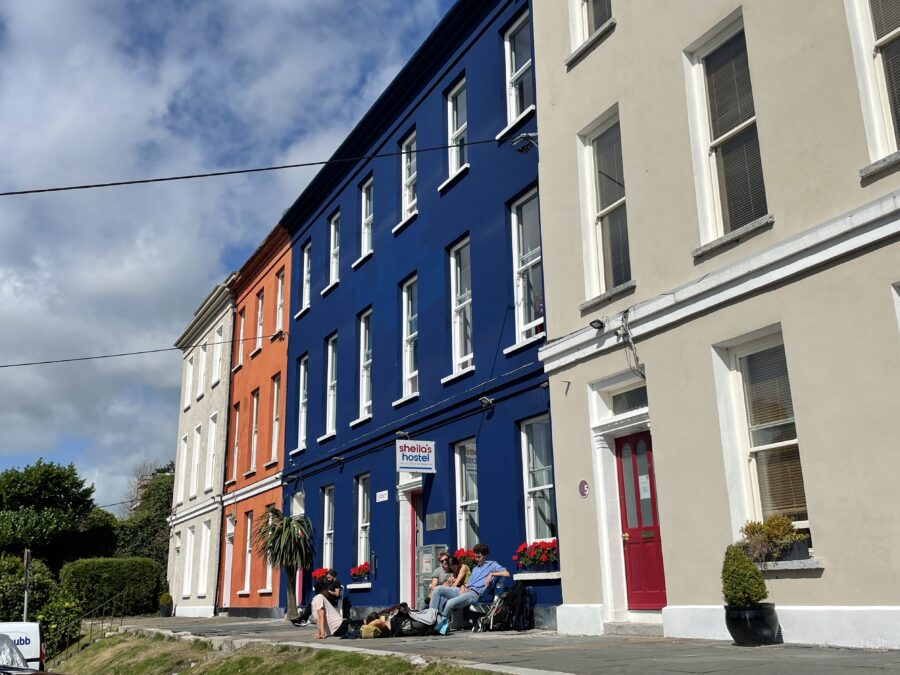
Kieran’s Press, “Targeting Derelict Sites a Must”, 22 August 2021
22 August 2021, “Kieran McCarthy, who is also a historian, has written a number of books on the history of the city and is a vocal advocate in the maintaining of Cork city centre’s character. ‘We need funding from Government to target the problem, to fund Compulsory Purchase Orders on it’, From falling masonry to risk of collapse: 103 buildings on Cork’s ‘dangerous structures’ list, From falling masonry to risk of collapse: 103 buildings on Cork’s ‘dangerous structures’ list (thejournal.ie)
Kieran’s Press, Irish International Trading Corporation (Cork) Book & Exhibition Launched, August 2021
22 August 2021, “Local historian and Cork City Independent councillor, Kieran McCarthy, has presented to the library copies of his new book, Irish International Trading Corporation (Cork), Celebrating 100 Years, which details the company’s growth from 1920 to the present day”, Rich history of iconic Cork company to be preserved at library,
https://www.echolive.ie/corknews/arid-40364363.html?fbclid=IwAR2FFgC9n4f3EcHBmzjlb7Ts5dNpLRIch7fhdT3Z6KmGuua-IBceGL65kHs
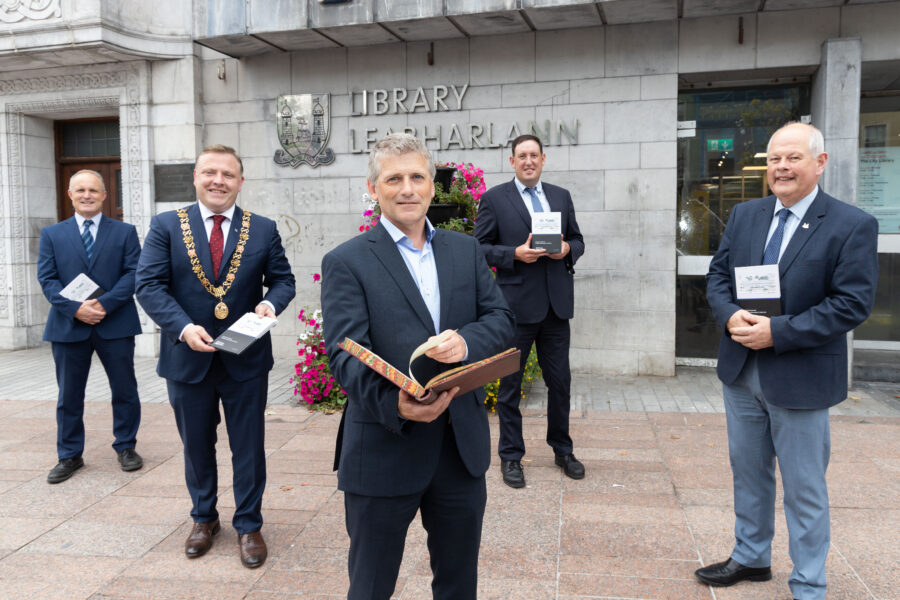
Kieran’s Submission, Pairc Ui Chaoimh Planning Proposal, 21/40374
Next Thursday 26 August is the last day for public submissions to the Planning Directorate, City Hall on this proposal. My objections on the encroachment, via building a new car park onto the edge of the Atlantic Pond, are outlined below and have been acknowledged as received by the planning unit.
Public submissions may be made on any planning application by post and accompanied by the €20 fee. They may also be made via email to plansub@corkcity.ie and the submitter will be contacted by a member of Planning staff to take a card payment.
“Re: Planning Application at Pairc Ui Chaoimh, Cork, 21/40374Dear Director,I write to make my concerns known regarding the planning proposal submitted above.There are parts of the proposal I support such as the GAA museum and cafe, but I have very large concerns on the car parking and on the Atlantic Pond intrusion. The car parking issue has never fully been resolved down by the Pairc.
Even at the most recent matches cars were still parked across immediate green spaces and in the new bicycle lanes on Centre Park Road and beyond. And the crowd at that match was smaller than usual because of COVID measures. A proper transport plan to and from the Pairc is needed. One cannot just keep building another carpark and hope that eliminates the problem. In addition for me providing another car park is not about enhancing the public realm. A car park brings many hazards plus does not add to what the new adjacent Marina Park is trying to do in terms of a very valuable green space or add to the new pedestrianisation areas such as The Marina.
The other principal issue I have is the construction and intrusion of a car park on the physical western bank of the Atlantic Pond. There are serious ecological concerns in pursuing the construction on the ‘edge’ of the pond. Another car park will destroy the ecology of that immediate area of the pond in particular, and have a knock-on effect on the whole pond. In addition, I feel the proposed playground to be provided is a tokenistic one at best.
Yours sincerely,_Cllr Kieran McCarthy


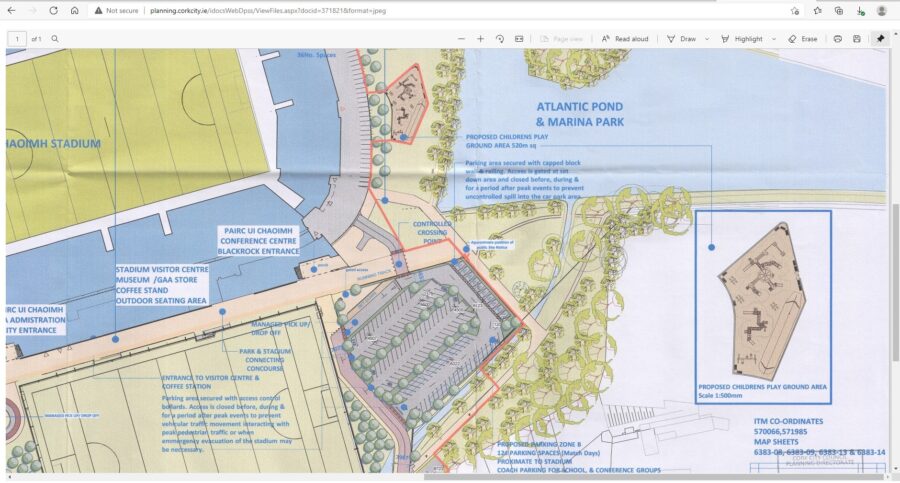

Irish International Trading Corporation (Cork) Exhibition with Kieran’s Book, 20 August 2021
Irish International Trading Corporation presents archive materials to Cork City Library
As part of Ireland’s National Heritage Week celebrations, Irish International Trading Corporation (IITC) has handed over an extensive collection of archive materials to Cork City Library, ensuring that the rich history of the 101-year-old company will be maintained for generations to come. Local historian and Cork City Councillor Kieran McCarthy has also presented copies of his new book to the library, Irish International Trading Corporation (Cork), Celebrating 100 Years which details the company’s growth from 1920 to the present day.
The archive materials presented to Cork City Library include minutes from board meetings, cash books, ledgers, letters and notes all dating back to the company’s inception against the backdrop of the Burning of Cork in 1920. These materials, as well as an exhibition of photographs will remain on display in the public areas of the library until September 17th.
Speaking at the formal handover of archive material to Cork City Library, the Lord Mayor of Cork, Councillor Colm Kelleher said, “The handover of these historic documents and copies of Cllr Kieran McCarthy’s book is an opportunity to celebrate the legacy of IITC and its shared history with Cork, whilst also highlighting the important role that Cork City Library plays as a custodian of the city’s rich history. I am delighted to be helping IITC celebrate this occasion, and I look forward to its continued success”.
IITC Managing Director, David Heffernan said, “Today marks another significant milestone in the history of IITC. The original headquarters for the company was located on Grand Parade, across the road from Cork City Library, so in effect we are returning these materials close to the site of the inaugural meetings that took place in the 1920s. In Cllr McCarthy’s book, we now have a definitive and detailed account of the work that our founders carried out to ensure that Cork played a key role in establishing trade routes with other countries in the early 1900s”.
The duty of care for these documents of significant historical importance now falls upon Cork City Libraries, and the newly appointed city librarian David O’Brien. “We are delighted to have this opportunity to preserve these materials in our archives. IITC was founded at a time of enormous historical significance in Cork, so it is truly fascinating to be able to reflect on the work that was done in setting up a company that fostered crucial trading links to Europe and America. It is our duty as trustees of Cork’s history to ensure that these documents, which are sure to be of public interest, are preserved for generations to come”.
IITC was founded by a collective of Cork business families at the Grand Parade in Cork in 1920. The founders were motivated by a desire to support commercial and industrial development in a new emerging Ireland. IITC has played a key role in the development of Cork, from supplying materials to aid the rebuilding of the city after its burning in 1920 all the way through to supporting local enterprise today. From relatively small beginnings, IITC has grown to become a national business with a global reach, employing over 120 people with annual sales of €60 million.
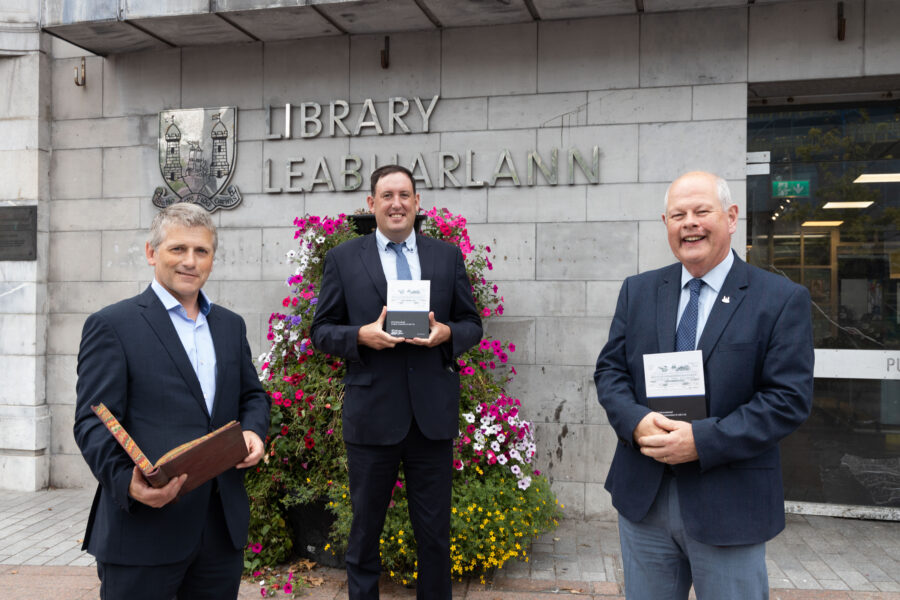

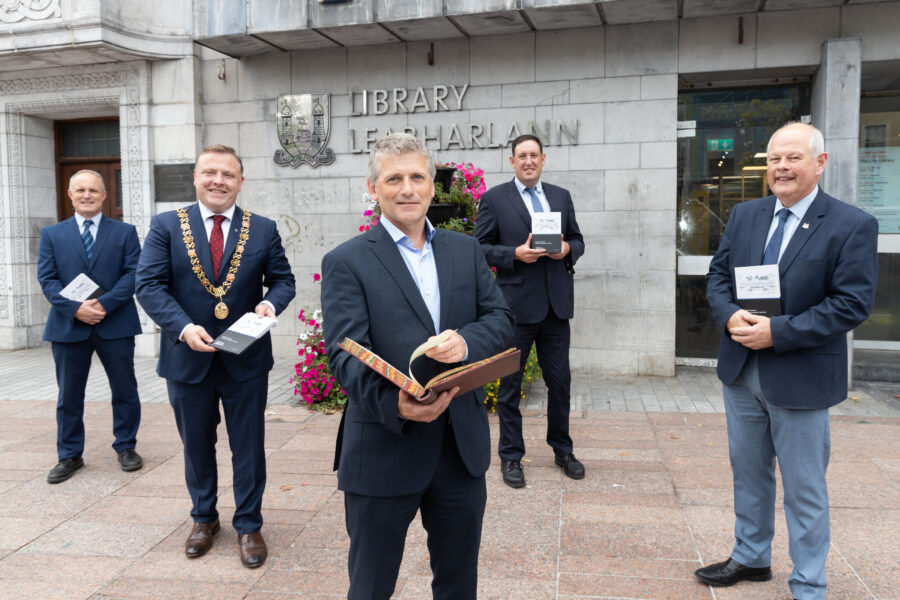
Kieran’s Our City, Our Town, 19 August 2021

Kieran’s Our City, Our Town Article,
Cork Independent, 19 August 2021
Kieran’s Heritage Week Audio Heritage Trails
The midway point has been reached for National Heritage Week 2021. There is still time to engage with my two virtual projects this year – the audio heritage trails of the Bridges of Cork and The Marina respectively. Usually, I am up to my eyes happily facilitating historical walking tours. But Covid is still scuppering my physical events. but hopefully the next few months will coincide with better news for the gathering of large groups that do not have to be socially distanced apart.
Both new audio trails are hosted by Meitheal Mara and I. All you need is your smartphone and some headphones. The first audio trail provides insights into the histories of the Cork city centre’s bridges, their place in Cork and some of their surrounding histories. The walk around the bridges is about two hours in duration. The trail is clockwise from South Gate Bridge up the south channel and down the north channel to cross back to the south channel. It ends at Nano Nagle Bridge.
They say the best way to get to know a place is to walk it. Through many centuries Cork has experienced every phase of Irish urban development. It is a city you can get lost in narrow streets, marvel at old cobbled lane ways, photograph old street corners, gaze at clues from the past, engage in the forgotten and the remembered, search and connect for something of oneself, and thirst in the sense of story-telling – in essence feel the DNA of the place. With so many layers of history in Cork, there is much to see on any walk around Cork City and its respective neighbourhoods. The River Lee has had and continues to have a key role in the city’s evolution. Many Corkonians and visitors have crossed over the River Lee’s bridges and have appreciated the river’s tranquil and hypnotic flow.
The audio trail begins at the oldest of the city’s bridges – that of South Gate Bridge. In the time of the Anglo Normans establishing a fortified walled settlement and a trading centre in Cork around 1200 AD, South Gate Drawbridge formed one of the three entrances – North Gate Bridge and Watergate being the others. A document for the year 1620 stated that the mayor, Sheriff and commonality of Cork, commissioned Alderman Dominic Roche to erect two new drawbridges in the city over the river where timber bridges existed at the South Gate Bridge and the other at North Gate.
In May 1711, agreement was reached by the council of the City that North Gate Bridge would be rebuilt in stone in 1712 while in 1713, South Gate Bridge would be replaced with a stone arched structures. South Gate Bridge still stands today in its past form as it did over 300 years ago apart from a small bit of restructuring and strengthening in early 1994.
The second of the new audio trails is on The Marina. A stroll down The Marina is popular by many people. The area is particularly characterized by its location on the River Lee and the start of Cork Harbour. Here scenery, historical monuments and living heritage merge to create a historical tapestry of questions of who developed such a place of ideas. Where not all the answers have survived, The Marina is lucky, that archives, newspaper accounts, census records and old maps and other insights have survived to showcase how the area and the wider area has developed. These give an insight into ways of life and ambitions in the past, some of which can help the researcher in the present day in understanding The Marina’s evolution and sense of place going forward.
Cork’s Marina was originally called the Navigation Wall or in essence it was an additional dock for ships adjacent to Cork City’s South Docks area. It was completed in 1761.
Following the constitution of the Cork Harbour Commissioners in 1814 and their introduction of steam dredging, a vigorous programme of river and berth deepening, quay and wharf building commenced. The dredger of the Cork Harbour Commissioners deposited the silt from the river into wooden barges, which were then towed ashore. The silt was re-deposited behind the Navigation Wall.
During the Great Famine, the deepening of the river created jobs for 1,000 men who worked on widening the physical dock of the Navigation Wall. In essence a fine road was constructed, which linked into Cork’s South Docks. To give an aesthetic to the new road, a fine row of elm trees was planted c.1856 by Prof. Edmund Murphy of Queen’s College Cork (now UCC). The elm trees were part of a crop and tree growing experiment.
In 1870, the Gaelic poet and scholar Donncha Ó Floinn put forward to the Improvements Committee of Cork Corporation that the new road of the Navigation wall be named Slí na hAbhann, which means the ‘pathway by the river’. Ó Floinn’s proposal was not accepted. The matter came before the Improvements Committee again in 1872. This time Ó Floinn suggested that the promenade be named ‘The Marina’. He outlined that ‘The Marina’ was the name allocated to a recently reclaimed piece of land near Palermo in Sicily. In July 1872, Cork Corporation formally adopted ‘The Marina’ as the name of the new road or promenade.
Listen to Kieran’s new audio trails under history trails at www.corkheritage.ie
Captions:
1113a. Daly’s Bridge aka Shaky Bridge, present day, which is one of the featured bridges in Kieran’s new audio heritage trail (picture: Kieran McCarthy).
1113b. The Marina, Cork, present day (picture: Kieran McCarthy).
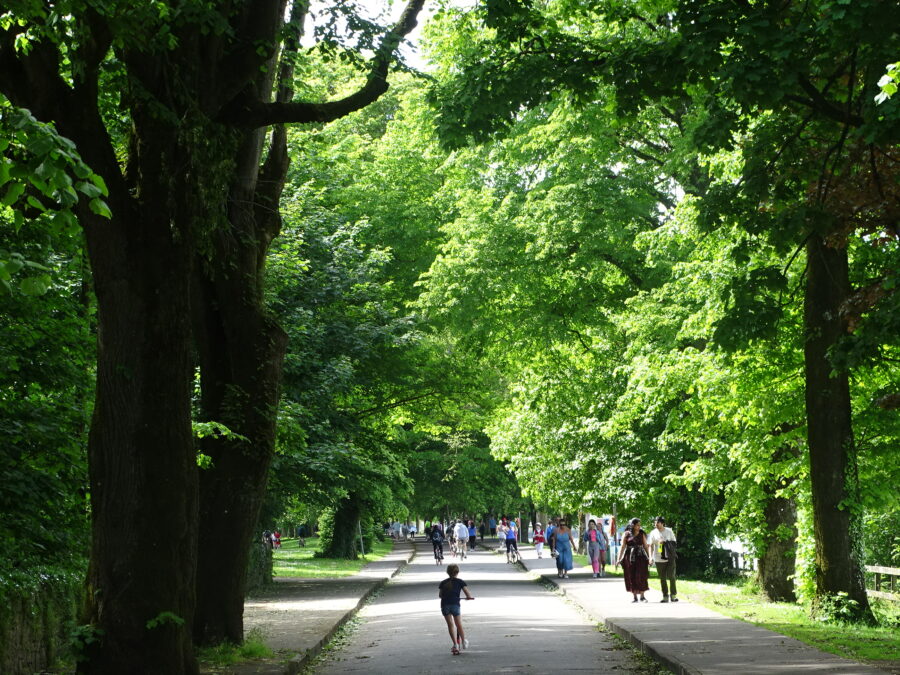
1113b. The Marina, Cork, present day (picture: Kieran McCarthy).
Cllr McCarthy releases Audio Heritage Trails for National Heritage Week, 14-22 August 2021
Cllr Kieran McCarthy, in collaboration with Meitheal Mara, is delighted to present two audio heritage trails this year as part of this week’s National Heritage Week (14-22 August). Take a walk and discover everything about the beautiful bridges of Cork with Kieran’s brand new audio trail. Stroll along the popular Marina and find out about its rich history.
The Bridges of Cork audio trail provides insights into the histories of the Cork city centre’s bridges, their place in Cork and some of their surrounding histories. The walk around the bridges is about two hours in duration and the trail is clockwise from South Gate Bridge up the south channel and down the north channel to cross back to the south channel. It ends at Nano Nagle Bridge. All you need is your smartphone and some headphones.
Cllr McCarthy noted: “With so many layers of history in Cork, there is much to see on any walk around Cork City and its respective neighbourhoods. Covid, though, has scuppered my physical walking tours for a second year in a row. However, I’m very excited about this new audio trail, which provides insights into the histories of Cork city centre’s bridges, their place in Cork and insights into some of their surrounding local histories”.
“This trail around the bridges is about two hours in length and the trail is clockwise from South Gate Bridge up the south channel and down the north channel to cross back to the south channel”, continues Kieran.
“A stroll down The Marina is popular by many people. The area is particularly characterised by its location on the River Lee and the start of Cork Harbour. Here scenery, historical monuments and living heritage merge to create a historical tapestry of questions of who developed such a place of ideas”, concluded Cllr McCarthy.
The audio trails are free to download. Just access them from Cllr McCarthy’s www.corkheritage.ie website under the History Trails section.
Kieran’s Our City, Our Town, 12 August 2021
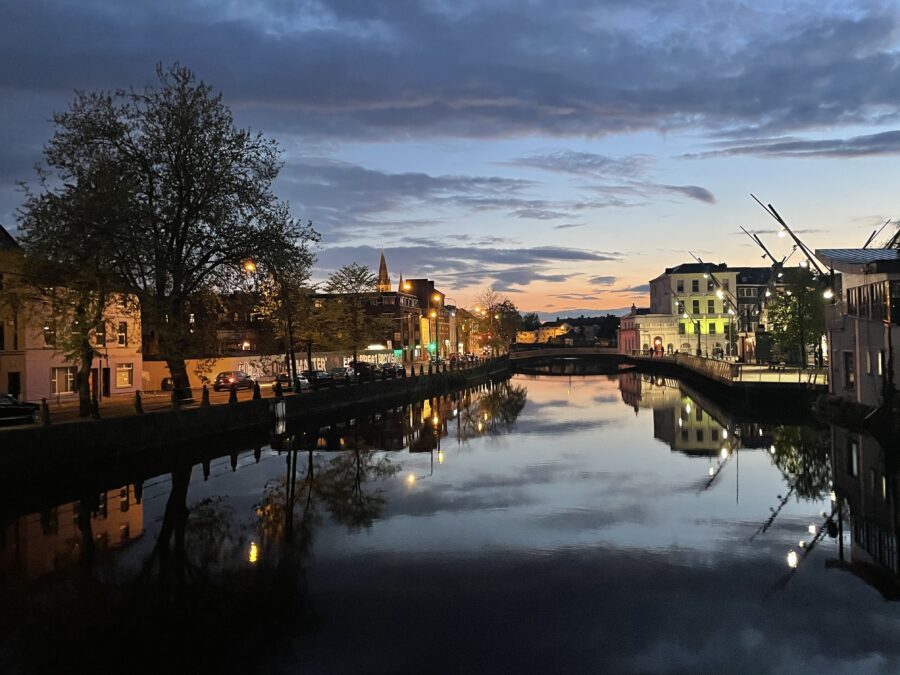
Kieran’s Our City, Our Town Article,
Cork Independent, 12 August 2021
Cork Heritage Open Day and Week Approaches
Cork Heritage Open Day and Heritage Week are looming. Cork Heritage Open Day which is organised by Cork City Council in partnership with the Heritage Council, is a wonderful celebration of the built heritage in the city. To mark the start of National Heritage Week, Cork Heritage Open Day will take place virtually on Saturday August 14.
The website www.corkheritageopenday.ie will go live on Saturday 14 August and will feature virtual guided tours of over 45 historic buildings from all over Cork City. Members of the public are allowed a glimpse of some of Cork’s most fascinating buildings ranging from the medieval to the military. The event showcases the many elements of Cork City’s rich heritage in a fun, family friendly way. The team behind the Open Day do group the buildings into general themes, Steps and Steeples, Customs and Commerce, Medieval to Modern, Saints and Scholars and Life and Learning.
These themes remind the participant to remember how our city spreads from the marsh to the undulating hills surrounding it, how layered the city’s past is, how the city has been blessed to have many scholars contributing to its development and ambition in a variety of ways, and how the way of life in Cork is intertwined with a strong sense of place.
It is always a great opportunity to explore behind some of Cork’s grandest buildings. With the past of a port city, Cork architecture is varied and much is hidden amongst the city’s narrow streets and laneways. Much of its architecture is also inspired by international styles – the British style of artwork pervading in most cases – but it’s always pays to look up in Cork and marvel at the Amsterdamesque-style of our eighteenth century structures on streets such as Oliver Plunkett Street or at the gorgeous tall spires of the city’s nineteenth-century churches.
For my part I am involved in a short film on the history of Cork City Hall. Cork has had a number of City Hall sites through the ages but none as grand as the present one. In the age of the Anglo Norman walled town and eighteenth century, civic business was conducted in King’s Castle. Business was also conducted in Cork City Courthouse for a time in the nineteenth century. In 1883, it was decided by a number of Cork businessmen that the Corn Exchange should be converted into an exhibition centre, a centre, which in 1892 became Cork’s City Hall. In December 1920, the premises were burned down by fires attributed to the Black and Tans as retribution for republican attacks. A new City Hall by architects Jones and Kelly was subsequently built. The limestone like for so many of Cork’s buildings is from nearby Little Island. The foundation stone of Cork City Hall was laid by Éamon de Valera on 9 July 1932.
Sites that also appear on the online Cork Heritage Open Day are Riverstown House in Glanmire, the Quaker Meeting House and Graveyard, The Maryborough Hotel, Cork Opera House, The Courthouse on Washington Street, Ballincollig Gunpowder Mills, Blarney Castle, Cork City Hall, Cork Savings Bank, St Luke’s Church and the Military Museum in Collins Barracks.
The virtual one stop shop www.corkheritageopenday.ie celebrates various Cork Communities who through interviews, video and imagery tell their story. For example, check out:
- Memories of a Cork Jewish Childhood, which has been produced by Ruti Lachs and sees former Cork residents remember their childhoods in Ireland, their Jewish upbringing, the synagogue and the characters. Interspersed with photos from the last hundred years of life in Jewish Cork, these stories paint a picture of a time and community gone by.
- Anne Twomey from the Shandon Area History Group speaks about Emma Hourigan, an extraordinary woman from the Maddens Buildings in Cork who played a central role in the Irish Revolution 1916-1923.
- Biddy McDonagh and Jean O’Donovan from the Traveller Visibility Group discuss their language Gammon and Cant and the tradition of the Beady Pockets in the Traveller Community.
- Jim Fahy speaks about the language of the Stone Masons “Bearlager na Saor”.
- Valerie Power, Breda Scanlon and Suzanne Dineen pay tribute to the Shawlies in Cork.
- Historian Michael Lenihan uses historic postcards to show how Cork has changed in the past 100 years.
For the first time, Cork Heritage Open Day, celebrates the natural heritage of Cork and members of the public can enjoy a wonderful guided tour of the Mangala in Douglas with William O’Halloran and a fascinating insight into the Glen River Park with Julie Forrester and Gerard O’Brien. For those wishing to test their knowledge of the streets, bridges and buildings in Cork, historian Liam O’hÚigín has created a special quiz for Cork Heritage Open Day!
Heritage Open Day is usually the start of weeklong heritage week events in Cork. For the second year in a row, physical events have been curtailed. My own historical walking tours remain ‘off the road’ at present. I have written up over fifteen of my tours complete with pictures and some very short films and put them in a new section on my website www.corkheritage.ie.
In addition on the website I have partnered with Meitheal Mara and Joya Kuin in putting together two audio heritage trails. The first is on the various historic sites down The Marina and this came out in early June. Our Heritage Week Audio Heritage Trail is on the 31 bridges of Cork. Start at South Gate Bridge and make your way anti-clockwise around the South Channel and North Channel of the River Lee. All you need is a smart phone and a set of head phones!
Captions:
1112a. Upstream view of the south channel of the River from Cork’s Parliament Bridge on a recent sunset; Discover the story of the city’s bridges and some of the rich local history on Kieran’s new audio heritage trail on the history trails section at www.corkheritage.ie.
1112b. Canon from the Siege of Sevastopol, 1854-55 on The Marina, Cork, present day; Discover the story of The Marina and its rich local history on Kieran’s new audio heritage trail on the history trails section at www.corkheritage.ie.
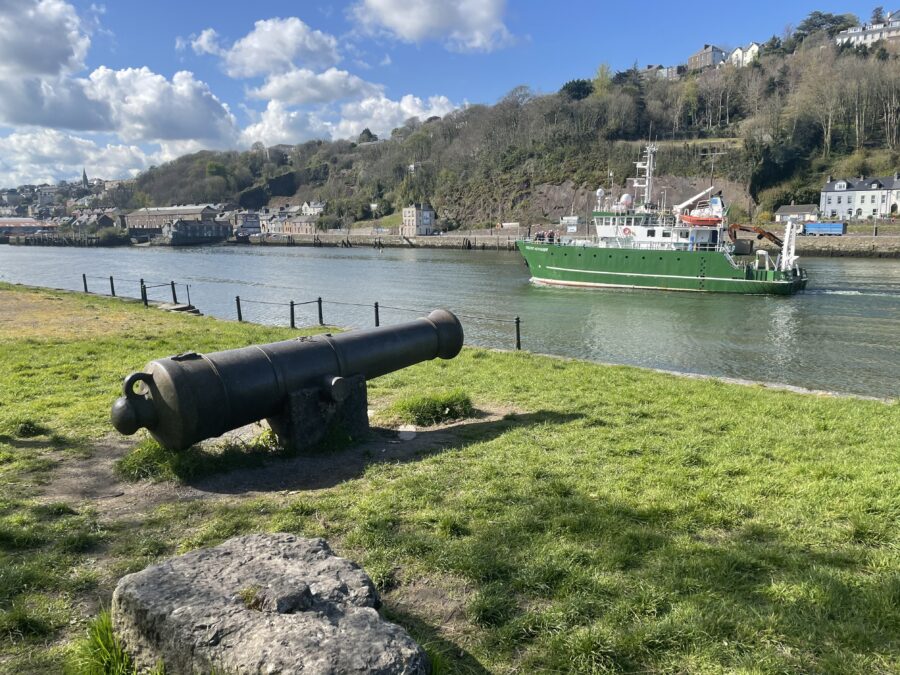
Cllr McCarthy to Discuss History of Cork City Hall for Virtual Cork Heritage Open Day
Local historian Cllr Kieran McCarthy will participate in the virtual Cork Heritage Open Day this Saturday 14 August. Cork Heritage Open Day which is organised by Cork City Council in partnership with the Heritage Council. The website www.corkheritageopenday.ie will go live on Saturday 14 August and will feature virtual guided tours of over 45 historic buildings from all over Cork City. Members of the public are allowed a glimpse of some of Cork’s most fascinating buildings ranging from the medieval to the military.
Kieran will participate by showcasing some of the stories connected to Cork City Hall as an important heritage building within the city. Kieran noted: “Cork has had a number of City Hall sites through the ages but none as grand as the present one. In 1883, it was decided by a number of Cork businessmen that the Corn Exchange should be converted into an exhibition centre, a centre, which in 1892 became Cork’s City Hall. In December 1920, the premises were burned down by fires attributed to the Black and Tans as retribution for republican attacks. A new City Hall by architects Jones and Kelly was subsequently built. The limestone like for so many of Cork’s buildings is from nearby Little Island. The foundation stone of Cork City Hall was laid by Éamon de Valera on 9 July 1932”.
Maryborough Hotel will also feature in this year’s Heritage Open Day. For the first time, the Open Day will also celebrate the natural heritage of Cork and members of the public can enjoy a wonderful virtual guided tour of the Mangala in Douglas with William O’Halloran.
In addition, for National Heritage Week, Kieran has partnered with Meitheal Mara and Joya Kuin in putting together two audio heritage trails. The first is on the various historic sites down The Marina and this came out in early June. Their Heritage Week Audio Heritage Trail is on the 31 bridges of Cork. All you need is a smart phone and a set of head phones. The bridges audio trail can be found on Kieran’s www.corkheritage.ie website under history trails from 14 August.